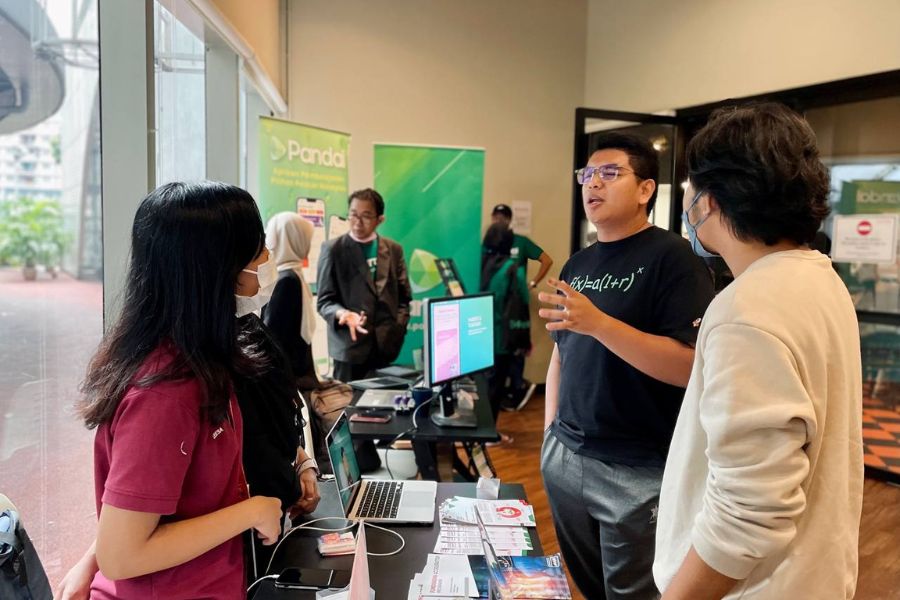This article is presented by AngelCentral, the most active community of angel investors in Southeast Asia. They organise regular curated pitch sessions, angel education workshops, and provide syndication services.
This article is a culmination of the partners’ observations and advice for founders who are fund-raising or preparing to. AngelCentral processes 800 funding applications annually and curates investing opportunities for her angel-investor community. Since its inception in 2018, AngelCentral’s members have invested >S$30M into startups. Start fundraising with AngelCentral today!
Fundraising is a crucial milestone for startups, but it can be challenging for new founders who are unfamiliar with the process. If founders, especially new founders are not adequately prepared with essential information which investors need, it can unnecessarily slow down the review process, and in some cases, even cause investors to lose interest, particularly if the founders take a while to respond.
In this article, we’ll discuss some commonly overlooked factors that new founders need to prepare for when fundraising for their startups.
1. Starting up details (incorporation, website, official email address, etc.)
Investors are usually unlikely to invest in abstract concepts or ideas without any tangible evidence. Additionally, they are hesitant to invest in founders who are not completely devoted to their business. Even if founders claim to be committed, investors look for concrete indications of their commitment and intention, such as incorporation, a website, or URL registrations, to evaluate how serious they are.
Incorporating a company and creating a website using no-code tools are relatively easy tasks these days. Even if the founders don’t have coding skills, it’s not a valid excuse for not having a website. Although this may be oversimplifying the situation, it’s difficult to believe that the founders are genuinely committed to building their business if they can’t take care of these fundamental aspects.
Another noteworthy yet concerning observation is that the LinkedIn profiles of founders do not reflect the commitments they are fundraising for. On one occasion, I discovered a CTO with multiple CTO-level commitments that the other co-founders were unaware of. As early investors, it is essential for us to ensure that the founding team is dedicated as a cohesive unit.
2. Investment deck
It’s probably obvious, but just in case, I’ve already discussed what should be included in a good pitch deck. To summarize without being repetitive, to prepare for fundraising, your pitch deck should explain the reasons behind why you, as the founder(s), are interested in the chosen industry and why solving the specific problem in that vertical is worthwhile.
It’s crucial for new founders to understand the difference between a sales deck and an investment deck. I once encountered an investment deck that was extremely large, almost 100MB. Although I was curious and opened it, I almost deleted it right away. It was a long presentation, consisting of more than 100 PowerPoint slides, with detailed screenshots of features and product information, making it more of a sales demo deck than an investment pitch. To differentiate between the two, new founders should view the investment deck as a tool to promote themselves and their company as the product, while the sales deck is used to sell their actual product or service.
To me, it seems like a frequent error made is in the TAM/SAM/SOM section. Some new founders tend to rely on global reports to demonstrate the potential of the space and to calculate their SOM based on their intended unit prices. This raises the question: can the SOM be doubled if the price is doubled? Instead, a more dependable method for estimating SOM (for example, for a B2B SAAS) would be to estimate the number of relevant adopters/buyers in the first market and multiply that number by their average expenditure on comparable goods or services
It’s important to use accurate market sizing data when presenting your pitch. For example, if you’re selling car tires, you shouldn’t use global car sales as your market opportunity. Also, be cautious when estimating how much companies spend on benefits. Don’t just use wages as a measure; it’s usually a percentage of that. The challenge is figuring out the percentage used, which often can’t be obtained directly from financial statements. A savvy founder should research industry benchmarks and use them in conjunction with financial statement information.
3. Funding needs and terms

To determine the amount to raise, it is important to consider the working capital needs for the next 18-24 months. It is advisable for new founders to create different scenarios and add a buffer of 20-30% of the cash needs based on the scenario that is most realistic and comfortable for them.
To obtain the funds, the founders have to offer equity in the company, which can be done immediately or in the future by using instruments like SAFE/KISS/notes. Even without a lead investor, the founders should state their expectations transparently and realistically to assist investors in making a swift decision. This is akin to having a price tag when shopping, as there is always a range of prices that a buyer is willing to pay. Personally,I am willing to consider valuations that are 20-30% above their comfort level, but if it goes beyond 40%, they will likely decline.
To determine a reasonable valuation or valuation cap for a seed or Pre-A round, there is no specific formula since early-stage companies generally have minimal market validation and negative cash flow. However, there are benchmarks that can be used to get a sense of the space. For instance, hardware or medical companies that require substantial R&D investments or tooling tend to have higher valuations, but this results in deeper founder equity dilutions. Additionally, there are differences between software models with high gross margin percentages and those with low gross margins, and founders should research within their industry to obtain a realistic valuation figure.
To elaborate further, founders should not use US valuations as a reference point for justifying their own valuation in Southeast Asia. According to one of our angel members, validation of a product in one state in the US can be assumed to work in another 15-25 states due to similar cultures and practices. However, validating a product in Kuala Lumpur does not guarantee its success in Jakarta, Bangkok, or Singapore due to differences in culture and practices. Therefore, new founders should be cautious and conduct proper research to determine a realistic valuation in the Southeast Asian market.
4. Financial spreadsheet
To give investors a better understanding of a startup’s sales projections and cost understanding, it’s important for founders to provide detailed forward projections for at least 24-36 months. Although some founders may include key projection numbers in their investment deck, more detailed projections are needed to help investors understand the founder’s insights.
If a company is less than 18 months old, it can be difficult to create accurate sales projections due to irregular usage and growth patterns. In such cases, sales projections can be used as a reference to assess the founder’s confidence and market insights. The focus then shifts to analyzing cost details and understanding unit economics.
Generally, I request previous financial records as a component of my due diligence procedure after agreeing to invest. The intention is to compare the founders’ statements against actual records. Preferably, the records should be audited or at least have appropriate management accounts. Additionally, I request bank statements for the most recent six months.
5. Other crucial information

To ensure a clear understanding of ownership, it’s essential for founders to provide an updated and detailed capitalization chart or shareholding table. This is particularly crucial for companies that have raised funds through SAFE or KISS, as these instruments allow equity conversion to happen later, which could result in founders being uncertain about their actual ownership.
The information is evaluated in conjunction with other data, not in isolation. For angel investors, due diligence is conducted to confirm their investment decision after verbally committing to invest. Personally, I use the documentation to verify what the founders have already communicated during the fundraising process. I also assess how well-organized and timely the information is presented, as well as the founders’ ability to provide comprehensive explanations for every data point, pattern, and decision. Strong founders are those who possess deep knowledge of their business and can effectively communicate their insights.
In conclusion, new founders need to take the time to prepare thoroughly before fundraising from investors. By preparing documents, creating a good pitch deck, determining funding needs and terms, and conducting research on industry benchmarks, new founders can increase their chances of successful fundraising for their startup.”



